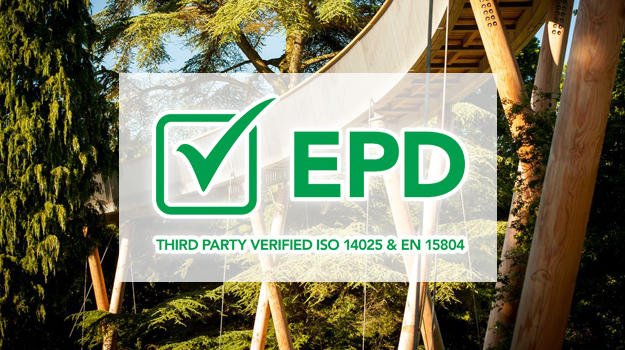
EPDs describe the potential environmental impacts of products based on life cycle assessment (LCA)
Environmental product declarations are an internationally recognised means of communicating information about environmental impacts. They provide construction professionals with a transparent way of assessing whether their decisions about products are responsible and contribute to a project’s sustainability.
EPDs cover specific aspects of the product life cycle, from raw material extraction, manufacture and fabrication, to use and end-of-life. In addition to quantified environmental information, an EPD contains a description of the manufacturing route, and a technical description of the product.
To support our clients’ data needs, Tata Steel has been approved as an EPD programme operator - the first steel company to achieve such approval. Being a programme operator means supervising the full EPD development process. Tata Steel can therefore provide product-specific EPDs in accordance with EN 15804 Sustainability of construction works - Environmental Product Declarations - Core rules for the product category of construction products and ISO 14025:2010 Environmental labels and declarations - Type III environmental declarations - Principles and procedures.
Externally verified, product-specific type III EPDs allow optimum resource decisions to be made, and they demonstrate the sustainability of our steel building products. Along with Tata Steel’s BES 6001 responsible sourcing certification, EPD scheme operatorship allows us to support construction supply chains in gaining credits under building assessment schemes such as BREEAM and LEED.
Not all EPDs are the same
Tata Steel’s EPD operatorship is supported by our world class LCA capability. We have supplied life cycle data on our products for over 15 years, growing our expertise and experience throughout that time. Since 2008 we have received four worldsteel awards for excellence in LCA.
That capability allows us to produce product- and supply chain-specific EPDs, conforming to internationally recognised standards, that provide comparability and functional equivalence.
It’s important to be aware that not all EPDs are the same. Some, such as those that we produce under our scheme operatorship, are specific to the manufacturer. Others represent average industry data, and do not necessarily give the complete picture about the environmental impact of the product in question.
This can lead to construction professionals trying to compare products based on data that isn’t directly comparable. There is a continued move in the industry towards greater standardisation and reliability with EPD data, but anybody making decisions based on EPDs should seek to engage with the product manufacturer to understand the scope.


The importance of module D
EPDs report on the environmental impact of construction products, based on assumptions across a number of different life cycle stages, or modules.
Module A concerns the product and construction process stages. Module B covers the use of the building, while module C concerns its end of life stage. Finally, module D looks at benefits and loads ‘beyond the system boundary’ - the potential for reuse, recovery or recycling.
Another way of describing the scope of module D is the circular economy.
What happens to construction materials and products at the end of a building’s life, and whether they can go on to be reused as they are or remanufactured into new products, is a significant part of environmental impact. Yet many EPDs do not include any assumptions for this, and module D in particular.
Materials and products might appear to have a low environmental impact based on their upfront carbon - or module A - but ignoring modules C and D could hide a greater environmental impact in the long term. The unintended consequence of that limited declaration is that carbon emissions in 50 or 60 years could actually increase, at a time when we might not be able to afford it.
To find out more about how Tata Steel and our products can support your ambitions to help deliver a circular economy, please contact us.
EN-Construction-Contact-Sustainability
Contact Sustainability














































































































































































